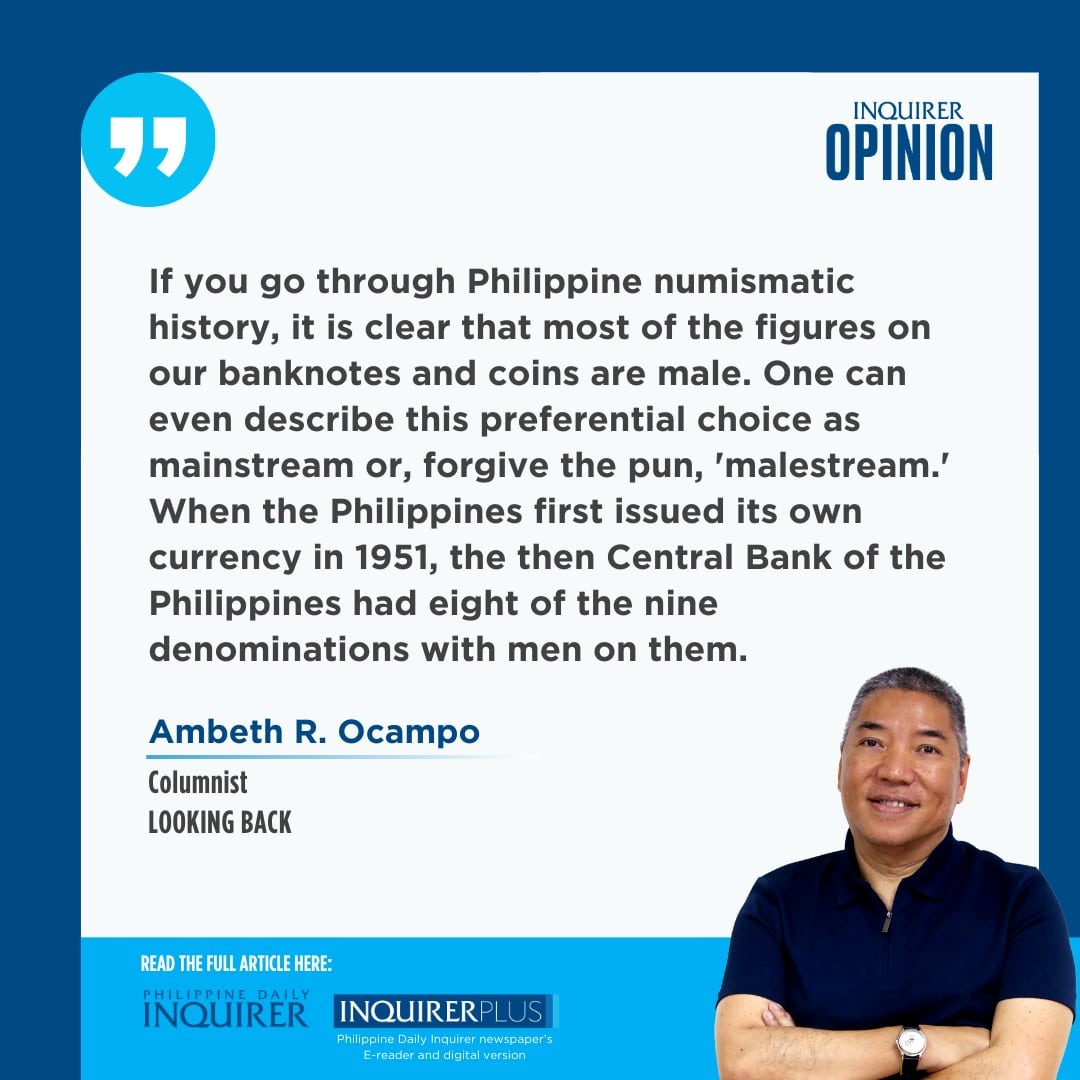News that the Philippine Coast Guard patrol ship BRP Teresa Magbanua recently withdrew from (Josefa Llanes) Escoda Shoal, in the disputed Spratly Islands should push Filipinos to look beyond current events to fully appreciate the historical significance behind these names. Teresa Magbanua (1868-1947) and Josefa Llanes Escoda (1898-1945) are Philippine heroines who should be continually remembered for their bravery and resistance to foreign rule.
Of the pair, Escoda is better known because her pretty face smiles on those who are fortunate enough to handle a P1,000 bill—the bill made of paper and abaca, not the atrocious plastic one with a monkey-eating eagle on it. Aside from being on our paper money for 33 years now, there is a monument to her outside the Girl Scouts of the Philippines National Headquarters on Padre Faura, Ermita, Manila, and another in her birthplace Dingras, Ilocos Norte. She may not look it, from the way she is represented with a warm maternal haze but she was a supporter of the guerilla resistance to the Japanese occupation of the Philippines. She was arrested and imprisoned by the Japanese in August 1944 and executed in January 1945. Her remains have never been found.
If you go through Philippine numismatic history, it is clear that most of the figures on our banknotes and coins are male. One can even describe this preferential choice as mainstream or, forgive the pun, “malestream.” When the Philippines first issued its own currency in 1951, the then Central Bank of the Philippines had eight of the nine denominations with men on them: Apolinario Mabini on P1; Jose Rizal on P2; Marcelo H. del Pilar and Graciano Lopez Jaena on P5; Jose Burgos, Mariano Gomez, and Jacinto Zamora on P10; Andres Bonifacio and Emilio Jacinto on P20; Antonio Luna on P50; Manuel Quezon on P200; and Manuel Roxas on P500. The only woman in the line-up was Melchora Aquino, better known as “Tandang Sora” on the P100 bill.
The nine denominations in the 1951 “English series” banknotes were reduced to six denominations from 1967-1973. It is significant that under the presidency of Ferdinand E. Marcos Sr., language in the banknotes shifted from English to Filipino and all the faces on the bills were male. As “consuelo de bobo” or a concession to Filipino womanhood, during the early years of martial law all currency carried the slogan “Ang Bagong Lipunan” (The New Society). Tandang Sora reappeared on a scallop-edged five-centavo coin that resembled the shape of traditional arrowroot cookies, sometimes referred to as sampaguitas. Poor Tandang Sora was further demoted, when the distinctive copper five-centavo coin was replaced by a round aluminum coin that was almost worthless it was punctured and repurposed, like the one-centavo coin, as a replacement for buttons. To discourage this misuse, the Central Bank changed the shape of the one-centavo from a round to a square coin. In time, Tandang Sora also disappeared from coinage and it was not until 1991 that another woman, Josefa Llanes Escoda, graced our banknotes on the P1,000 bill together with Vicente Lim and Jose Abad Santos. All three were murdered by the Japanese during World War II.
Teresa Magbanua is sidelined by history not only because of gender but also by geography. She is considered a “local” heroine of the Visayas rather than a “national” like Escoda who was from “Imperial Manila.” In addition, Magbanua did not have the same prominent social standing that Escoda had. Magbanua was born in Pototan, Iloilo, earned her teaching qualifications in Manila, and spent some years in a classroom where she gained notoriety as a disciplinarian. She gave up teaching when she married, spending time managing a farm where she learned, not from “Teacher Rubilyn” like Alice Guo, but on her own how to ride and handle weapons. Her equestrian skills combined with her military exploits inspired the historian Gregorio Zaide to dub her “the Visayan Joan of Arc.” The only thing they had in common was being represented or remembered charging into battle on a beautiful white horse. Joan of Arc was burned at the stake as a witch and heretic in 1431. Then in a rare backtrack, the Roman Catholic Church that condemned her in 1431, canonized her as a saint in 1920.
Magbanua was referred to as a general, without official designation neither from the Katipunan under Bonifacio nor the revolutionary government under Emilio Aguinaldo. She fought in the Philippine Revolution against Spain, and again in the Philippine-American War, and supported guerillas in World War II. She died in Pagadian, Zamboanga del Sur, in 1947.
Perhaps Education Secretary Sonny Angara can be prodded by the memory of Escoda and Magbanua to improve the present Araling Panlipunan content, enriching it with the overlooked people and episodes that contributed to the emergence of the Filipino nation.
—————-
Comments are welcome at aocampo@ateneo.edu
